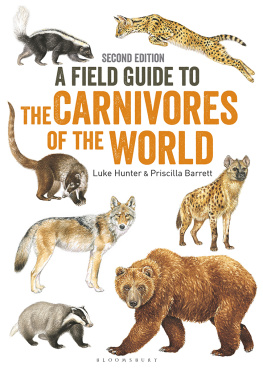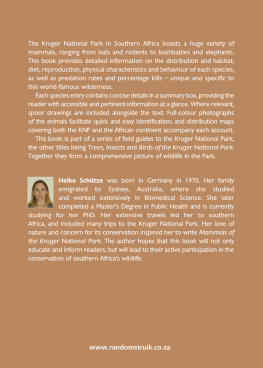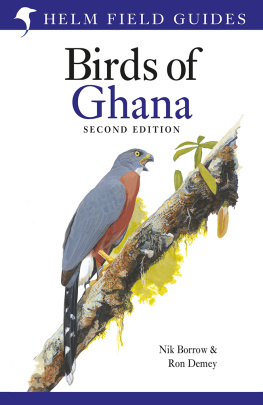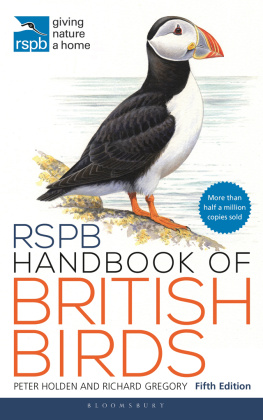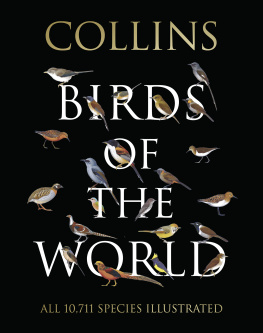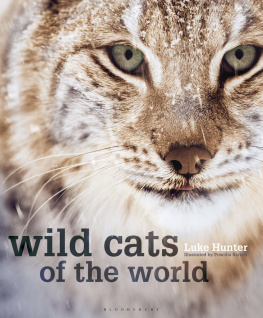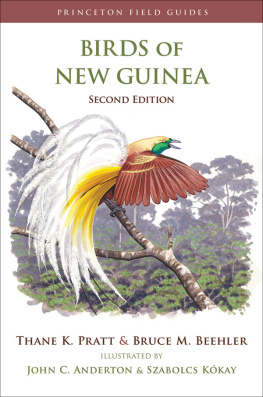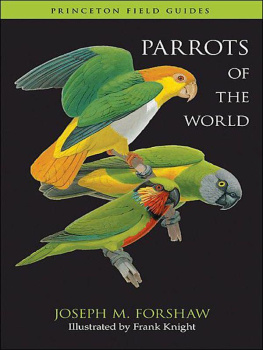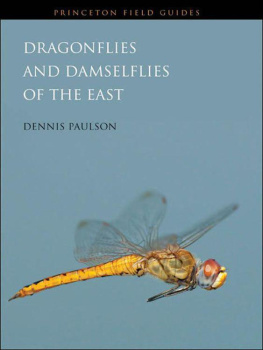
For Sophie
BLOOMSBURY WILDLIFE
Bloomsbury Publishing Plc
50 Bedford Square, London, WC1B 3DP, UK
This electronic edition published in 2018 by Bloomsbury Publishing Plc
BLOOMSBURY, BLOOMSBURY WILDLIFE and the Diana logo are trademarks of Bloomsbury Publishing Plc
Published in the United Kingdom 2018
Copyright text by Luke Hunter, 2018
Copyright illustrations by Priscilla Barrett, 2018
Skull and footprint illustrations () by Sally McClarty
Maps by Lisanne Petracca
Luke Hunter has asserted his right under the Copyright, Designs and Patents Act, 1988, to be identified as Author of this work
For legal purposes the constitute an extension of this copyright page
All rights reserved
You may not copy, distribute, transmit, reproduce or otherwise make available this publication (or any part of it) in any form, or by any means (including without limitation electronic, digital, optical, mechanical, photocopying, printing, recording or otherwise), without the prior written permission of the publisher. Any person who does any unauthorised act in relation to this publication may be liable to criminal prosecution and civil claims for damages.
Bloomsbury Publishing Plc does not have any control over, or responsibility for, any third-party websites referred to or in this book. All internet addresses given in this book were correct at the time of going to press. The author and publisher regret any inconvenience caused if addresses have changed or sites have ceased to exist, but can accept no responsibility for any such changes
A catalogue record for this book is available from the British Library
Library of Congress Cataloguing-in-Publication data has been applied for
ISBN: 978-1-4729-5079-6 (PB)
ISBN: 978-1-4729-5080-2 (eBook)
Design by Rod Teasdale
To find out more about our authors and their books please visit www.bloomsbury.com where you will find extracts, author interviews and details of forthcoming events, and to be the first to hear about latest releases and special offers, sign up for our newsletters.
CONTENTS
SPECIES ACCOUNTS
INTRODUCTION
This book describes all of the worlds terrestrial carnivores, 250 species that are united in a shared ancestry of subsisting mainly on meat. Many other species, humans included, eat meat, but this does not make them carnivores in scientific nomenclature. That label belongs exclusively to the members of the order Carnivora, which, despite remarkable variation in size and shape, all descend from a small civet-like carnivorous ancestor that lived more than 60 million years ago. Some modern carnivores eat little meat or, as in the case of the , none at all, but all members of the Carnivora trace their ancestry back to the same predatory origins, and retain many of the physical, behavioural and ecological adaptations common to their truly carnivorous relatives.
The Carnivora is the fifth-largest mammalian order (of twenty-nine extant orders), occurs on every large landmass including Antarctica, and inhabits every major habitat on Earth, from the hyper-arid interior of the Sahara Desert to Arctic ice sheets. The worlds smallest carnivore, the tiny . The order Carnivora includes some of the worlds most iconic, magnificent and admired species and, regrettably, some of the most endangered.
This book covers the worlds thirteen terrestrial carnivore families. It does not include three chiefly marine carnivore families, the sea-lions (family Otariidae, sixteen species), seals (family Phocidae, nineteen species) and the Walrus (family Odobenidae). While these three families have, at times, been classified as a separate order, the Pinnipedia, there is no dispute today that they belong within the Carnivora. Although they do not appear here, the pinnipeds are covered in many excellent field guides to marine mammals.
Carnivores are separated into two major suborders, reflecting a divergence early in the orders evolution an estimated 4550 million years ago (although given the paucity of fossil remains, possibly considerably earlier). Suborder Feliformia contains the cat-like families Felidae, Hyaenidae, Herpestidae, Eupleridae, Prionodontidae, Viverridae and Nandiniidae. Suborder Caniformia comprises the dog-like families Canidae, Ursidae, Procyonidae, Ailuridae, Mephitidae and Mustelidae, as well as the three pinniped families.
Carnivore Family Tree
Phylogeny of the Carnivora, showing family level divisions and the approximate dates at which related families shared a common ancestor. All modern carnivores descend from miacids, small, civet-like carnivores that lived approximately 60 million years ago.

H OW MANY SPECIES OF CARNIVORES?
This books first edition covered 244 species of terrestrial carnivores. In the intervening years, at least a further nine species have been described, while others have been subsumed, bringing the total in this edition to 250. The changes are mostly the product of increasingly powerful genetic comparisons between populations. Some pairs of species long assumed to be different, based mainly on appearance, turned out to be the same (e.g. Grandidiers and ).
In principle, these newly discovered genetic distinctions reflect other meaningful biological differences, for example, in morphology, behaviour or ecology, and especially in the defining characteristic of species, reproductive isolation; species cannot produce fertile offspring with a second species. Although that principle mostly holds true in the Carnivora, exceptions exist. Few would question that ) reveals the challenges in delineating the boundaries between species. Our classification of organisms as species is a momentary snapshot in time on the extremely complex and ongoing evolutionary process of speciation, and exactly what defines a species is debated vigorously even among biologists. This book takes a conservative approach to adopting new species and includes only those supported by multiple lines of published evidence (e.g. molecular, morphological, ecological and biogeographic) and that are widely accepted (e.g. by the International Union for Conservation of Nature Species Survival Commission (IUCN SSC) Specialist Groups devoted to carnivores). Additions, as well as cases where species have been subsumed and some that remain unresolved, are summarised below in the section Carnivore Families.
CARNIVORE FAMILIES
Suborder FELIFORMIA, 7 families, 121 species
FAMILY FELIDAE CATS, 40 species
Size range Rusty-spotted Cat and Black-footed Cat (12.5kg) to Tiger (75261kg)
The cat family arose approximately 30 million years ago in what is now Eurasia, and today occurs globally except in Antarctica and Australasia. A single subfamily, the Felinae, comprises all extant species (the famous sabretooth cats belong in a second, now extinct, subfamily, Machairodontinae). Some authorities group the genera Panthera and Neofelis into a separate subfamily, Pantherinae (big cats). Recent and comprehensive analyses based largely on genetics use the term lineages to denote closely related groups of cats effectively the same as subfamily used for other carnivore families (highlighting some confusing subjectivity in naming conventions). For consistency, lineage is used here. The eight lineages within the Felidae are:

